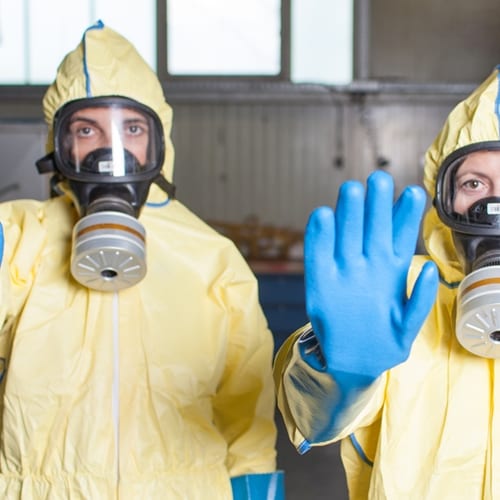When a diver has to don a HAZMAT suit for work, they they must take special consideration of their environment in addition to typical diving safety procedures. An article in the most recent issue of Underwater Magazine examined the rigorous precautions that HAZMAT divers have to undertake to make their missions safe and successful.
Workers must receive thorough medical examinations and vaccinations before they conduct work in hazardous areas. Since HAZMAT work can include lengthy dives at industrial facilities or landfills, simple maneuvers may bring the diver into contact with dangerous waste, especially if a sudden movement damages the suit or equipment.
One of the sources the magazine interviewed for this article, Alan Humphrey of the Environmental Protection Agency, cited the necessity of managing a diving operation so any hazardous elements present are contained, leaving the crew safe.
"There is the inherent risk that everyone tries as best they can to control because you're working underwater, and then there's the added, potential risk associated with the types of contamination that you're working with," he said. "Just like anybody out there, we have to address all those risk factors and control and mitigate them as best we can." The EPA also has particular limits on what it will task its divers to do, Humphrey explained, avoiding the kinds of work that commercial divers might do for more scientific endeavors.
Though the sites where HAZMAT divers work may vary, proper diver certification and training is always crucial for ensuring that workers can safely perform their work and minimize their own personal risk. Contractors can investigate tailored commercial diving insurance for this level of work, so employees are accounted for during difficult operations.

